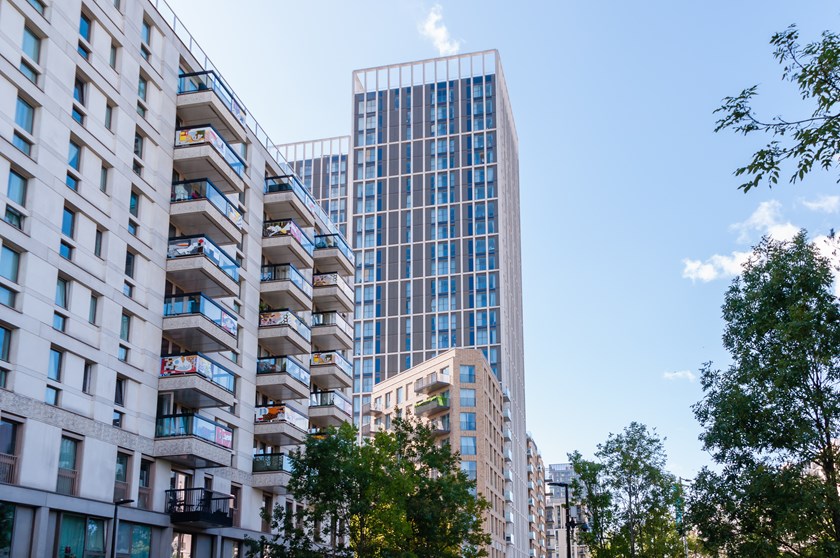The Building Safety Act 2022 in application
Insight

For a long time, those of us with more than a passing interest in the Building Safety Act 2022 (the Act) have been waiting to see how the Tribunal will approach and apply it to the cases before it. We have previously discussed the implications of “Triathlon”, which saw the owner of the Olympic Park being hit with an £18 million fire safety bill (Olympic Village Decision: a comfort to leaseholders but a threat to overseas investment?). This decision is being appealed and again we are back to waiting for the outcome. In the meantime, more decisions are starting to come through and, while it will take some time before there will be a significant body of helpful decisions (and before appeals are heard), a Remediation Order against an owner has now been granted and some other useful points have emerged from the recent decision in Grey GR Limited Partnership v Edgewater (Stevenage) and others (CAM/26UH/HYI/2023/0003). In this article, we look briefly at the approach taken, which will make uncomfortable reading for developers or those previously connected to a developer, but which may provide some comfort to owners seeking contributions from developers and connected parties.
Context
A Remediation Order (the first in fact) was made against the owner of Vista Tower in Stevenage. This prompted the owner “Grey” to apply for a Remediation Contribution Order (an RCO effectively does what it says on the tin – requiring a contribution towards the remediation cost) against the original developer of the building, along with 95 (yes, ninety-five) others it considered qualified as “associated persons” under the Act. The total amount sought, being the cost of past and future costs of fixing the fire safety defects at the Vista Tower, was estimated to stand at over £20 million. The application for the RCO did not seek to apportion this cost between the various “associated persons” who had all effectively shared directors with the original development company during the relevant period.
Outcomes
A few key lessons emerged from this decision (which is certainly worth reading in its entirety if this is an area of interest or concern).
- Defects: the Tribunal rejected the developer’s argument that a “defect” for the purpose of the Act should only be found where the building work did not comply with the building regulations in force at the time of construction. The Tribunal was not persuaded by this attempt to limit liability, noting that the 2010 regulations had been heavily criticised and were widely considered not fit for purpose. Non-compliance with the building regulations of the day was only one way (not the only way) of determining whether something was a defect.
- Building Safety Risk: again, we find ourselves in a world where the objective seems to be to eliminate and mitigate all risk. The developer argued (in common with fire safety experts) that a building safety risk should consider whether the risk is a tolerable one, having regard to all other features at the building. Accordingly, they argued, a risk rated “medium tolerable” would not constitute a building safety risk for the purpose of the Act. The Tribunal disagreed, finding that any risk above “low” may be a safety risk. So just because something was deemed to present a tolerable risk under PAS9980, this did not mean that the Tribunal would agree when considering applications under the Act.
- Disproportionate Costs: the Tribunal was not persuaded that remedial costs which were considered to be disproportionate could not be included in an RCO. This effectively marks a shift away from the perspective that the “reasonable” and “proportionate” nature of all costs is something at the forefront of our minds when advising clients in respect of their potential liability (and the merits of any claim they may have). In the context of the Act, safety was considered paramount and may well justify building owners pushing on with costs of remedial works recommended by their professional advisors, even when such costs might otherwise be considered to be disproportionate.
- Respondents: given the above, it may come as no surprise to learn that the Tribunal was not willing to limit the parties to whom the RCO could extend. Here, we have the first instance of a Tribunal considering just what tatters of the corporate veil may remain intact when applying the Act. It prioritised the Act’s objective: to identify those with the financial means to contribute to required remedial works, regardless just how tenuously they may be connected with the original developer. This effectively lifted the corporate veil, leaving those connected entities perilously exposed. The Tribunal also gave some helpful commentary (albeit perhaps not that welcome for developers or those affiliated with them):
- Even if the development made no profit at all, it would still be just and equitable to include in the order the total amount of remedial costs.
- The developer sits at the top of the hierarchy for liability (following the logic applied in Triathlon).
- The asset position of an entity is not relevant when considering whether to make an order.
- The presence of a wider corporate/group structure is relevant. Beneficial ownership does not have to be traced back to one person; it is sufficient to show some or all of the same relevant beneficial owners or other similar corporate connection.
When determining which of those 95 respondents sought to be included by the owner should have an RCO awarded against them, the Tribunal thought it relevant to consider whether the particular entity:
- involved property, development or construction;
- was presented to potential funders or third parties as part of a group (with the original developer);
- was linked to families of key individuals behind the developer; or
- was linked by financial/other dealings (or if records were opaque).
The few respondents who were excluded were not active in the property sector, some being charities or other types of business. Where the key individuals at the developer had only a minority stake in and no real control over a company, the Tribunal considered it unfair to include that company in the order.
Implications
The Tribunal appears to be taking a broad-brush approach, readily ruling in remedial costs (even if disproportionate), defects (even if they complied with the standards of the day) and, in the context of RCOs, third parties – even if their connection to the original developer was relatively tenuous. When seeking an RCO, building owners should be willing to do a deep dive and include all those connected to the developer. Meanwhile, those with historic connection to developers active in residential high-rise buildings should be prepared to be drawn into litigation.
This publication is a general summary of the law. It should not replace legal advice tailored to your specific circumstances.
© Farrer & Co LLP, March 2025







